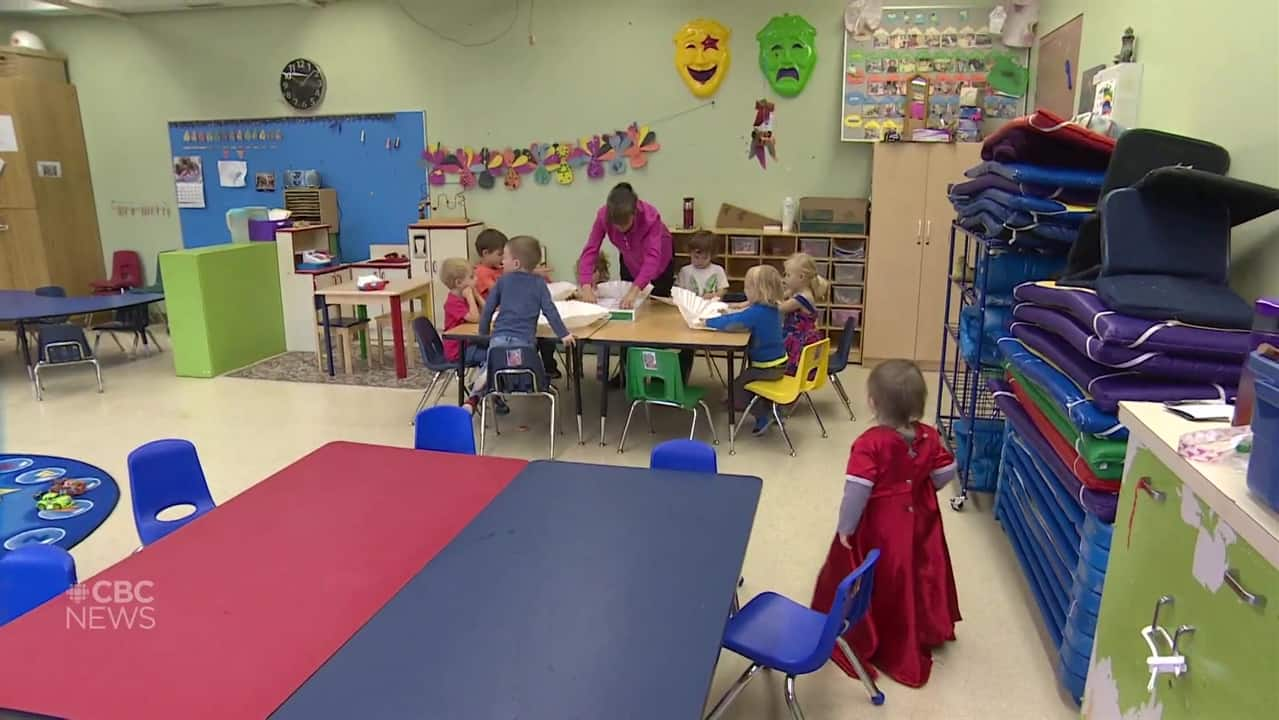Report highlights slow start to creating daycare spaces in Sask. as long waitlists remain

Saskatchewan has succeeded in its goal of providing $10-a-day daycare, but has had little success creating enough spaces to meet demand.
“While the price goes down for those currently in childcare, it does not make it more accessible for other families because there still are no spaces,” said Megan Schmidt, the director and pedagogical leader at First Years Learning Center in Regina.
She said the facility, located in the city’s east end, operates with 90 spots and currently has a waitlist of more than 1,900.
Schmidt said the waitlists in other places are likely very similar. She said there is a dramatic gap between demand and supply in the province.
“It was maybe done a little bit backwards,” she said.
Featured VideoSaskatchewan met its goal of providing $10 per day childcare this past April but a new report has found it had very little success at creating enough spaces to meet demand.
It’s been more than two years since the federal and Saskatchewan governments signed the Early Learning and Child Care Agreement, committing to a $10-a-day price ceiling for regulated childcare in the province.
A new report by the non-partisan Cardus think tank has found that the province got off to a slow start in reaching its goals of creating additional licensed child care spaces.
Under the agreement, Saskatchewan committed to creating “28,000 new regulated early learning and child care spaces” within five years.
Peter John Mitchell, the family program director at Cardus, said that while Saskatchewan targeted the creation of 6,000 new spaces in the first year of the agreement, it only reached 37 per cent of that goal, or 2,212 spaces.
Mitchell stressed that the number of new spaces also doesn’t paint the whole picture, as it doesn’t account for the number of licensed spaces lost due to facility closures.
Mitchell found that by the end of the first fiscal year, Saskatchewan only recorded a net addition of 642 operational licensed spaces. That means it will need to create 25,788 spaces by 2026 to reach its target, according to Mitchell.
“They’re going to have a set of pace of over 6,000 spaces every year after that to try to meet the five-year goal,” said Mitchell.
“Certainly I think starting slow start means greater complexity, more difficulty in the subsequent years.”
In a statement, the Ministry of Education said that from April 1, 2021, to June 30, 2023, there have been 5,710 licensed spaces created in the province.
While that’s a 32 per cent increase in the number of licensed spots, it’s nowhere near the pace the province needs to meet its goal. The figure also doesn’t account for possible closures.

While everyone agrees that more spots are needed, creating them remains a challenge.
“In order to have more spaces, we need more early childhood educators in the field and those early childhood educators need to be qualified and they need to have gone through their classes and they need to want to be here and while some of them want to be here right now, they can’t be because they can’t work for just above minimum wage,” said Schmidt.
The Morning Edition – Sask8:49Regina mother talks waitlists and conditions of daycares
Featured VideoA daycare run from the basement has been flooding for six years now. The flooding has been cleaned up now and children can go back to that location, but that’s after a three-month pause. Now, one mother says she’s having to take heaters to the daycare.
The Ministry of Education said it has recently boosted wages for early childhood educators, but Schmidt said that benefit isn’t available for everyone.
Saskatchewan’s problems are not unique, Mitchell said, pointing to Cardus’s analysis of the first year of childcare agreements in New Brunswick and British Columbia that found similar results.
In all provinces, labour shortages have proven to be a significant barrier.
“That’s something that provinces I think will continue to to wrestle with and that has a direct effect on its ability to implement these these targets,” Mitchell said.
Cardus’s report also found that during the initial fiscal year of the agreement, Saskatchewan spent less than half of the $141 million in funding it receive from the federal government for this purpose. In fact, the province amended the agreement to allow it to carry forward 64 per cent ($73 million) of the first year’s funding into the second year.
“It’s really one thing to to make these funding announcements, it’s quite another thing we’re learning to to implement them and we’ll have to see what happens going forward,” said Mitchell.



